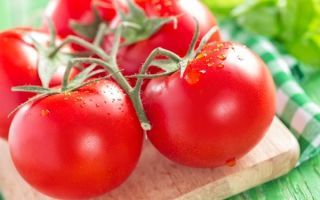Content
- 1 The chemical composition and calorie content of tomatoes
- 2 Health benefits of tomatoes
- 3 Tomatoes during pregnancy
- 4 Is it possible for a nursing mother to tomatoes
- 5 At what age can tomatoes be given to children
- 6 Is it possible to eat tomatoes while losing weight
- 7 Which tomatoes are healthier: red or yellow
- 8 Is it okay to eat green tomatoes
- 9 The benefits of dried and sun-dried tomatoes
- 10 What is the use of salted tomatoes
- 11 The benefits of cherry tomatoes
- 12 The healing properties of tomatoes
- 13 Features of the use of tomatoes for various diseases
- 14 Tomato face and hair masks
- 15 What can be made from tomatoes
- 16 Why is tomato salad with cucumbers useful?
- 17 How to choose tomatoes on the market
- 18 How to store tomatoes at home
- 19 Harm of tomatoes and contraindications
- 20 Conclusion
Tomatoes have always been famous for their beneficial properties and pleasant taste. Summer salads and winter homemade preparations from this vegetable are not losing their popularity. Let's figure out what the benefits and harms of tomatoes are, for what diseases they are necessary, and for which they are contraindicated, and also find out what can be prepared from this product.
The chemical composition and calorie content of tomatoes
The biochemical composition of tomatoes is diverse, since they contain amino acids, mono- and oligosaccharides, organic acids, and iron salts. The fruits contain the following macro- and microelements:
- potassium;
- magnesium;
- calcium;
- phosphorus;
- zinc;
- fluorine;
- copper;
- iodine.
The aroma of the fruit is given by volatile alcohols and aldehydes.
The calorie content of tomatoes per 100 grams is only 19.9 kcal. Tomatoes contain an insignificant amount of proteins - 0.6 g, as well as 0.2 g of fat and 4.2 g of carbohydrates.
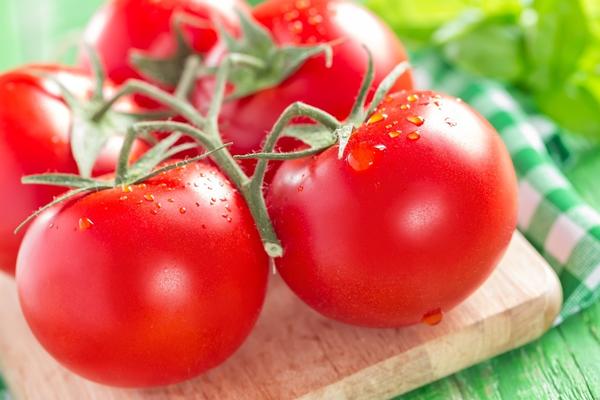
What vitamins are found in tomatoes
This healthy vegetable contains a significant amount of B vitamins, PP, beta-carotene. In terms of vitamin C content, some varieties of tomatoes are comparable to citrus fruits.
Health benefits of tomatoes
Tomatoes have a beneficial effect in several ways:
- They prevent oxidative and inflammatory processes in the body, thanks to which tomatoes help against cancer.
- They destroy existing cancer cells thanks to a special substance - alpha-tomato.
- They regulate the functioning of the nervous system, being a good antidepressant due to the content of serotonin, the hormone of joy.
- They have antibacterial properties due to the presence of beneficial phytoncides.
- They help with constipation, since the skin of the vegetable stimulates intestinal motility.
- They prevent thrombosis, as the seeds inside the fruit thin the blood.
The beneficial properties of tomatoes are due, among other things, to the presence of lycopene in them. This antioxidant becomes more beneficial in the finished product. It is well absorbed together with vegetable oil, which can be used to season salads. It is lycopene that prevents DNA mutation and the growth of cancer cells.
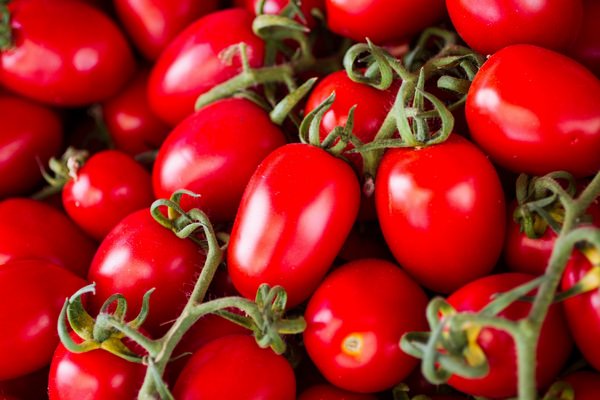
Why tomatoes are good for women
Tomato is good for the female body - alpha-tomatin and lycopene reduce the risk of breast cancer. Also, the use of this vegetable tidies up the condition of the skin, making it smoother and more tender.
The benefits of tomatoes for men
The effect of a vegetable on men's health is known.Tomatoes are good for prostatitis, and research has shown that regular consumption of tomatoes reduces the risk of prostate cancer.
Tomatoes during pregnancy
Pregnant women can and even need to eat tomatoes. Iron and potassium in their composition are useful for the hematopoiesis of the expectant mother, and phosphorus and calcium are necessary for the formation of the baby's skeletal system.
Vitamin C protects a pregnant woman from frequent colds, and vitamin B9 is recommended to be consumed by both parents even before conception - this reduces the risk of malformations of the child.
Is it possible for a nursing mother to tomatoes
The rich composition of vitamins and minerals will only benefit the baby and nursing mother. Tomato juice enhances lactation, and also normalizes the water-salt balance. However, red tomatoes are allergenic foods. First, you should check if such food will harm your baby. It is better to start using small portions, observing the reaction of the baby. If the child reacts normally, then the portions can be gradually increased.
At what age can tomatoes be given to children
The beneficial properties of tomatoes make them an essential product for a children's menu. However, it is worth introducing a vegetable into a child's diet no earlier than 10 months of age; at an earlier age, it will harm the digestive system. Moreover, this only applies to the thermally processed product. With fresh vegetables, you should wait until the child is 1 year old. It is advisable to remove the skin from fresh fruit. To do this, the vegetable is pre-poured with boiling water.
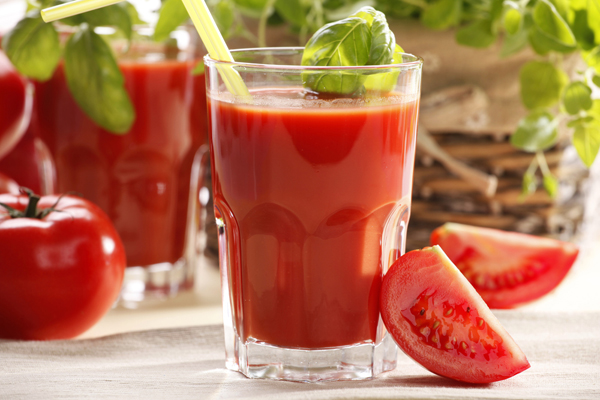
It is better to start acquaintance with a vegetable with tomato juice or puree. Babies can be given ready-made puree for baby food, provided they are confident in the quality of the product. The very first serving should not exceed half a teaspoon. The rate can be increased by observing the reaction of the child's body to the product.
For children over 3 years old, you can bake tomatoes with other vegetables and meats, and it is also useful to add them to soups and salads.
Is it possible to eat tomatoes while losing weight
The low calorie content of fresh tomato makes it a useful product for the diet. In addition, the vegetable has a number of other benefits for losing weight:
- copes well with edema;
- removes toxins and bile;
- improves digestion;
- normalizes metabolism.
The lycopene in the vegetable helps break down fat cells. The redder the fruit, the more lycopene it contains. Cherry tomatoes are especially useful in this regard. Tomatoes go well with meat products, as they improve the absorption of animal protein.
Which tomatoes are healthier: red or yellow
In some ways, yellow tomatoes are much healthier than red ones:
- They contain retinol, which is beneficial for vision, bones and skin.
- Yellow tomatoes rarely provoke an allergic reaction.
- This tomato variety contains fewer calories.
- Yellow tomatoes contain more myocin, a substance that strengthens the walls of blood vessels.
Yellow tomatoes contain less vitamin C, but this can be considered an advantage. An excess of this vitamin can cause heartburn, so yellow tomatoes are less aggressive on the body.

Is it okay to eat green tomatoes
Unripe vegetables contain too much solanine, a substance that can harm the body. Therefore, before use, such fruits must be blanched in several waters.
Green tomatoes help with varicose veins, but you don't even have to eat them for that. Green tomatoes will also bring benefits as compresses.Tomatoes are cut into rings, applied to the areas of manifestation of varicose veins and fixed with cling film and bandage.
The benefits of dried and sun-dried tomatoes
The main advantage of dried and sun-dried tomatoes is their long shelf life. In addition, dried and sun-dried vegetables retain all the benefits of fresh tomato. Therefore, the unusual and pleasant taste of this product can be enjoyed at any time of the year, and it will be beneficial for the intestines, the state of blood vessels and mood.
What is the use of salted tomatoes
If tomatoes are salted correctly, they also retain all the useful components. The amount of lycopene in salted tomatoes is almost not reduced, so this product can also be used for the prevention of cancer.
The benefits of cherry tomatoes
Cherry tomatoes have a sweeter, spicy and milder flavor. The palatability remains unchanged even in the cold season. The shelf life of these fresh tomatoes is rather long, unlike conventional varieties. Also, cherry tomatoes contain more glucose and some vitamins, for example, vitamin A, which is beneficial for eyesight.
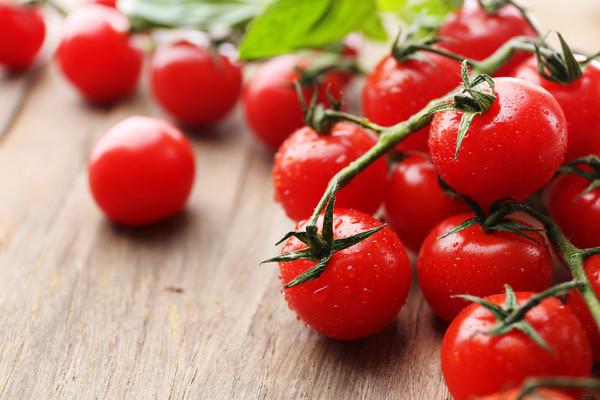
The healing properties of tomatoes
The vegetable is often used in traditional medicine and is useful for treating a number of diseases.
Against fungus
To neutralize pathogenic microscopic fungi, tomato juice from ripe fruits with a tablespoon of honey is useful. It must be taken several times a day, 200 ml before meals.
From cough
A mixture of a kilogram of tomatoes and 300 g of garlic and horseradish will help get rid of phlegm. You need to take such a remedy for 1 tbsp. l. before meals three times a day.
For wound healing
A paste of crushed fruits will help speed up the restoration of the skin. With regular application of such gruel, even purulent wounds heal faster.
Features of the use of tomatoes for various diseases
We will figure out whether it is possible to use a vegetable for various diseases and how to take it correctly.
With gastritis
With an exacerbation of the disease, you can only eat ripe and non-acidic fruits. The skin must be removed even in remission. It is better to combine the vegetable with other foods. With increased acidity, the consumption rate is no more than 100 g per day. With low acidity, it is allowed to eat up to 300 g of the product.
With pancreatitis
It is possible to include tomatoes in the diet of a patient with pancreatitis only in the absence of seizures. Even so, vegetables must be heat treated - steamed, dried or boiled, but not baked. Eating green and sour fruits is prohibited.
With gout
Tomatoes contain oxalic acid, which is contraindicated in patients with gout. However, its content in the vegetable is so low that the acid will not interfere with the excretion of uric acid salts from the joints. And vitamins and minerals will only benefit in case of illness. It is best to eat cooked tomatoes, including sauces.
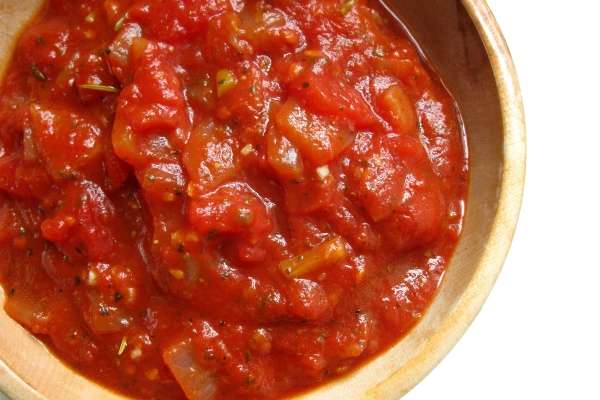
With diabetes mellitus
Eating tomatoes is useful for this disease, since fiber helps to normalize digestion. The vegetable has a beneficial effect on the circulatory system suffering from diabetes, clearing the vessels of cholesterol.
With type 1 diabetes with tomatoes, you need to be careful. They produce more bile and juice, so overuse of tomatoes can harm the pancreas.
For type 2 diabetes, tomatoes can be eaten fresh. Salted or canned tomatoes will harm the patient's body.
Tomato face and hair masks
Tomatoes are also used in home cosmetology. Its health-giving properties make it suitable for skin and hair care.
The apple and tartaric acid in the vegetable is a good peeling agent. Tomato masks remove old layers of the epidermis, which gives the skin an even and healthy tone.

To prepare the mask, you need to knead the peeled fruit and add the egg yolk.The nourishing mask can be kept for 15 minutes and then rinsed with warm water. For oily skin, the yolk can be replaced with protein.
The same composition can be used for hair, if desired, adding useful oils to it - castor, burdock, olive. The mask should be spread over its entire length and the head should be wrapped in a plastic bag and towel. It is recommended to wash it off after half an hour.
What can be made from tomatoes
In addition to eating fresh vegetables, they can be fried, boiled, baked. Tomatoes are included in mouth-watering soups, the most popular of which is the puree soup. Stuffed tomatoes will be an interesting and unusual dish. Tomatoes can be used to make thick sauces for dressing main courses. Freshly squeezed tomato juice will be helpful. For the winter, the fruits can be preserved.
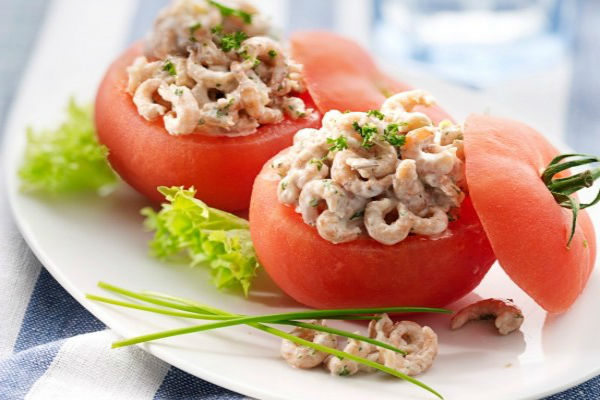
Why is tomato salad with cucumbers useful?
Fresh vegetable salad is useful primarily due to the high content of vitamins in both tomatoes and cucumbers. Regular use of such a salad will improve digestion, metabolism, and relieve swelling. You can add a special touch to the dish by adding onions and fresh herbs - this will make the salad even healthier. The calorie content of tomato and cucumber salad is no more than 17 kcal per 100 g, if you do not use fatty dressings. Such a low energy value allows you to eat a salad of cucumbers and tomatoes for breakfast, lunch and dinner without fear for your figure.
How to choose tomatoes on the market
When choosing tomatoes, it is important to focus on the following signs:
- Colour. The redder the fruit, the more ripe and healthier it is. The shade of the tomato should be even, without spots.
- The size. Too large fruits are not more useful than small ones, so you need to focus on the average size.
- Smell. Quality vegetables have a non-acidic, pleasant and appetizing smell.
- No damage. If the integrity of the fruit is broken at least in one place, such a vegetable is unsuitable for food. At the site of damage, bacteria accumulate that harm the body.
Quality vegetables should feel firm to the touch, but not too dense or firm. Soft fruits are likely already starting to rot, so it's best not to take them.
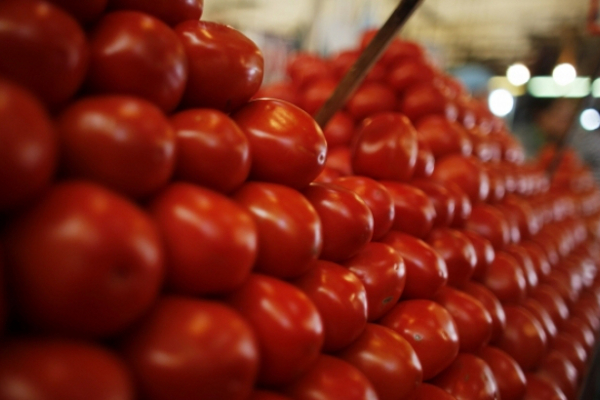
How to store tomatoes at home
The fruits do not need to be stored in the refrigerator - this will cause them to lose their flavor. Only overripe tomatoes are put in the cold. Vegetables of medium ripeness are stored at room temperature, it is important to protect them from direct sunlight.
Harm of tomatoes and contraindications
The benefits of tomatoes are obvious, now it is important to find out what the harm of these vegetables is:
- The main problem is the allergenicity of tomatoes. In some cases, allergy is a strict contraindication to eating a vegetable.
- Oxalic acid in tomatoes negatively affects water-salt metabolism, therefore, people with diseases of the musculoskeletal system and kidneys should not abuse them.
- Because of the choleretic effect, tomatoes should be eaten with caution in patients with cholelithiasis.
- Salted and pickled tomatoes should not be used for hypertension and other vascular and heart diseases.
Conclusion
The benefits and harms of tomatoes depend on several factors: maturity, freshness, quality and the presence of contraindications in people who include the vegetable in their diet. In most cases, eating tomato will improve health, so the decision to diversify the diet with this healthy vegetable will only benefit the body.

